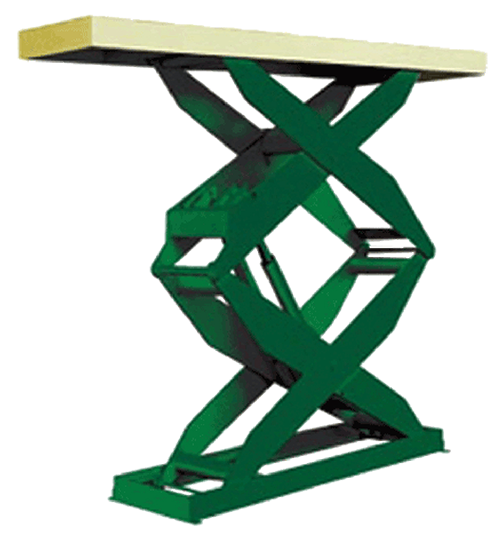
Understanding Lift Table “Drifting” and “Leak Down”
Greg Conner | 09 July 2015
A majority of industrial lift table owners are probably familiar with the phenomenon commonly referred to as “drifting” or “leak down”. However, they may not know what causes this, or how it can be controlled.
What is “drifting” or “leak down”?
Generally speaking, industrial lift tables are very simple in design. They feature single acting hydraulic systems, which provide power as the table lifts up, and they rely upon gravity to cycle the unit down. Once a hydraulic lift table is raised, it holds a vertical elevation by restricting the hydraulic fluid from passing back to the reservoir. Over time some of the hydraulic fluid will pass by the cylinder seals, check valve, or lowering valve and allow the lift to gradually “leak down”. This is sometimes also referred to as “drifting”.
How much “drifting” or “leak down” is acceptable?
The American National Standards Institute (ANSI) standard allows ¾” drift per hour on 36” travel. However, many manufacturers design their industrial lift tables to adhere to more stringent standards. For example, Southworth Products designs its units to hold downward drift or leak down to a maximum of 3/16” per hour.
Can “drifting” or “leak down” be eliminated?
As a rule, lift table drifting or leak down can’t be completely eliminated as over time some amount of fluid will escape back to the reservoir. However, through the use of sophisticated valves it is possible to maintain near zero leakage rates. Most industrial lift manufacturers refer to this standard option as a “Minimum Drift Package". Designs vary from manufacturer to manufacturer, but the basic overall design includes (2) two special down valves plumbed in series. Escaping fluid not caught by the first valve is captured by the second. Minimum Drift Packages can reduce drift or leak down considerably. For example, Southworth Products brags that its “Minimum Drift Package” will not allow any measurable “drift” within an eight-hour period or only 1/16” in a 24-hour period. For most manufacturers, adding a minimum drift package after the unit has been installed is not possible or extremely difficult as it will require significant and costly modifications to the lift table’s valving and cylinders. If you know your application requires minimal drifting, it’s best to select this option prior to fabrication.
Other things to consider about lift table “drifting” or “leak down”
- Most standard lifts don’t exhibit noticeable drift and are well within the standard tolerance, but there is no guarantee from lift to lift as each valve is individually manufactured.
- The cylinder’s stroke is not linear to the lift’s vertical travel. At the very bottom and the very top of the lift’s travel, the actual cylinder stroke is minimal. Consequently, a lift is more likely to have measurable drift at these elevations.
- Higher travel and larger capacity lifts are less sensitive to “drifting” or “leak down”. They require more displacement of oil to raise and therefore less sensitive to “drips per hour” to leak down or drift. The reverse is unfortunately true also--the smallest, light duty lifts may be highly sensitive to drifting.
Selecting a lift table is not an easy process. Bastian Solutions is widely recognized as a leader in industrial lift tables and can assist you in selecting the correct industrial lift table for your application. You can also visit the lift assist and pallet handling section of our website for to shop, price and compare models.
Greg is the SVP of Corporate Development and Marketing at Bastian Solutions. A proud Purdue University graduate, at Bastian he works to identify and drive strategies to propel the company forward. His responsibilities include identification of emerging technologies, forming strategic partnerships and M&A activities and execution of the strategic planning process. He carries with him years of experience in the field, having previously worked as a project engineer, field application engineer and regional director of Indiana.
Comments
No comments have been posted to this Blog Post
Leave a Reply
Your email address will not be published.
Comment
Thank you for your comment.